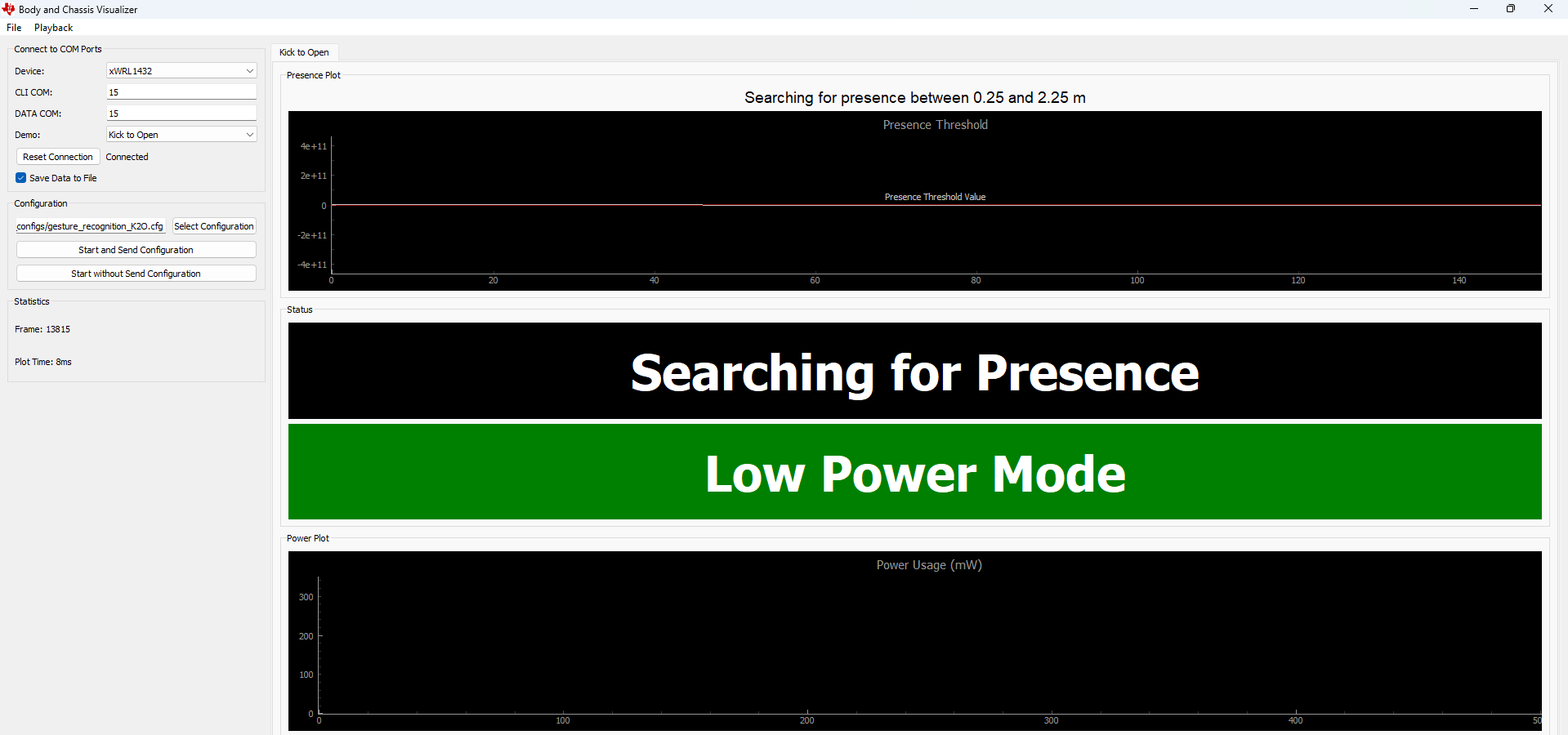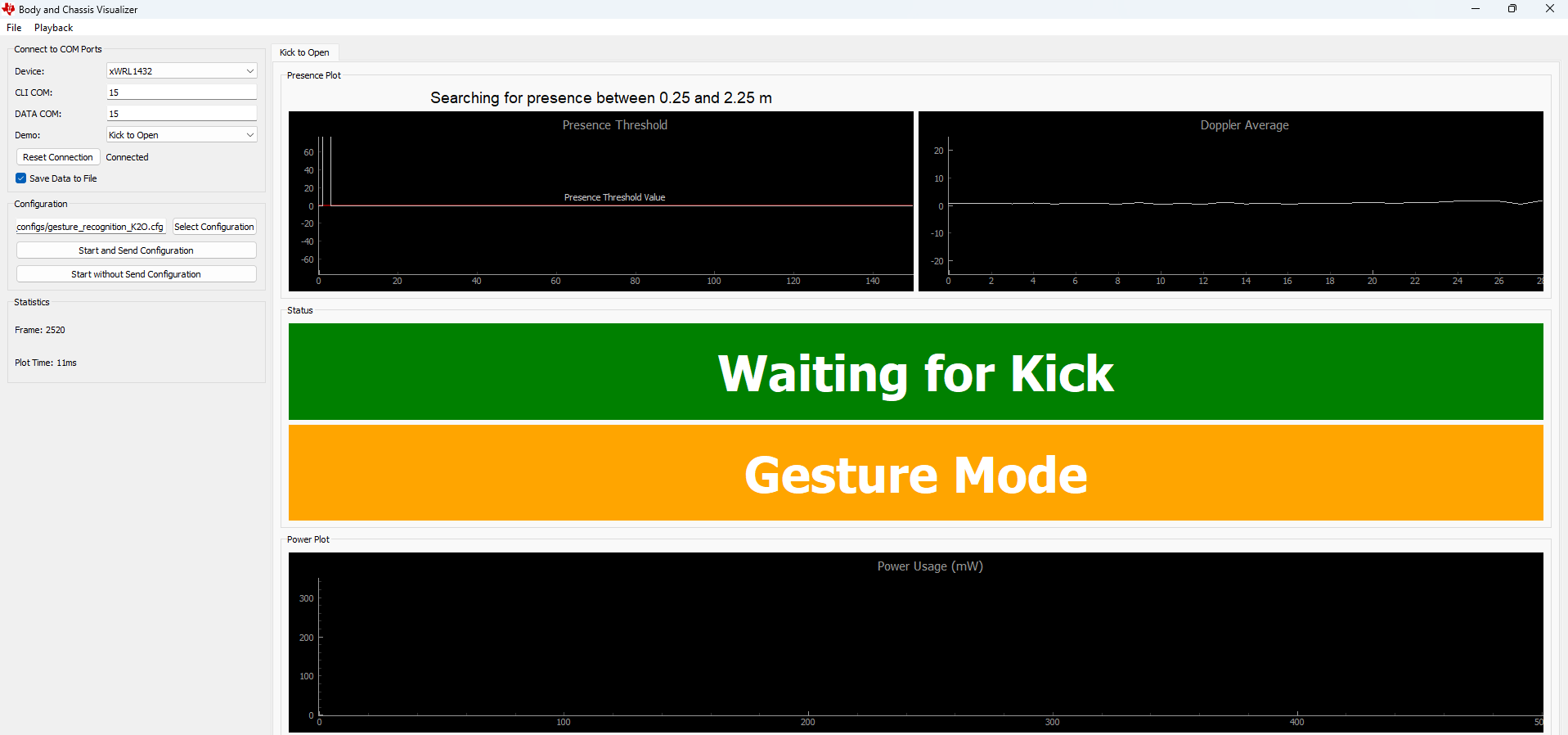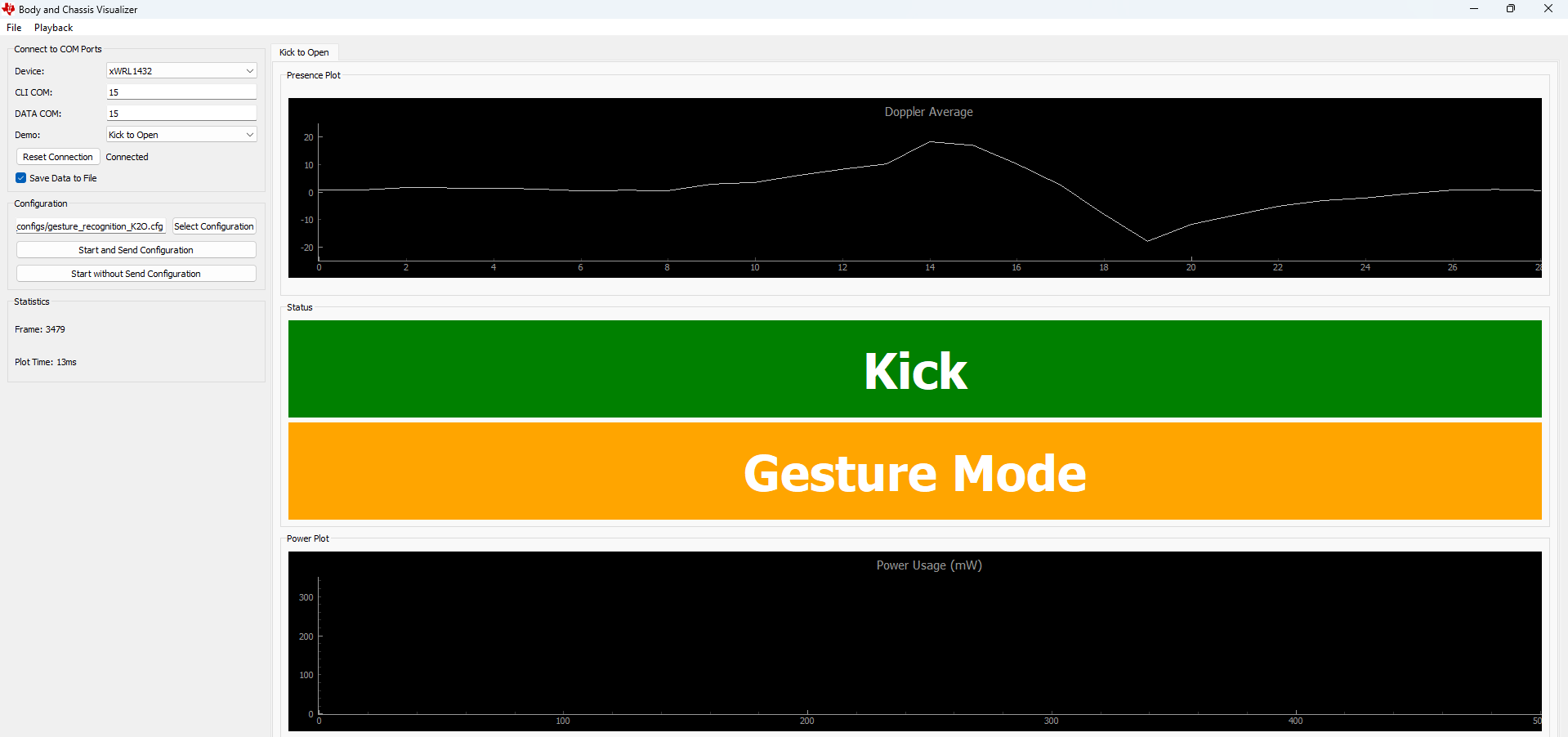TIDUF96 October 2024
3.3 Test Results
This section demonstrates two modes: a low-power presence detection mode and a gesture recognition mode. While in presence detection mode, the device operates on minimal power searching for a person within range of approximately 2m. In the KTO demonstration, by default the device is in presence detection mode.

Figure 3-8 Device is in Presence Detection Mode
Once a person enters the presence detection range (roughly 2m), the device switches from Low Power Presence Detection Mode to Gesture Recognition Mode, in which the frame rate is much higher. Additionally, the device supports Detection or Classification of one gesture (at a range of 0–1m, and 0.5m left or right of the sensor), that is, Kick.

Figure 3-9 Device is in Gesture Recognition Mode
Once the kick gesture is performed, the gesture is detected and the Kick confirmation is displayed in the GUI as shown in the Figure 3-10.

Figure 3-10 Kick Detected